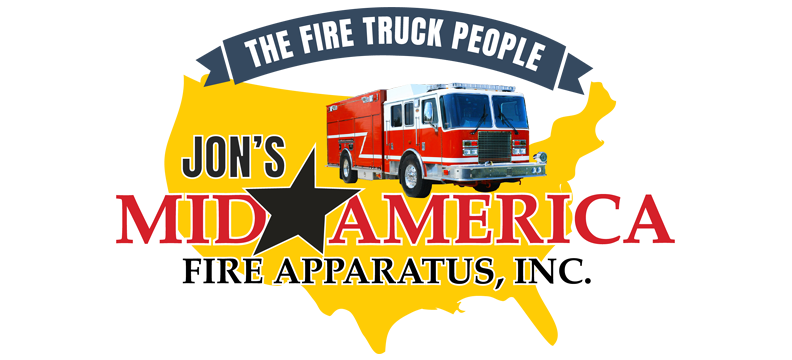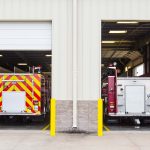Operating a fire apparatus is a great deal of responsibility to ensure that people can be rescued in a fast, efficient manner. Getting to the scene of an accident or fire as soon as possible is incredibly important, but getting there safely is just as important. You won’t be able to help anyone if your apparatus is turned over in a ditch or caught in a three-car collision.
Follow these basic tips so your fleet is staying safe on and off the road.
Starting the apparatus
Proper safety procedure starts the second a firefighter gets into the truck. Before the truck speeds off to the site of a crisis, here’s a few steps that should be taken:
- Put your seatbelts on. Before responding to an alarm, all seatbelts need to be on. Countless firefighters have died from not wearing their seatbelts in a crash. Don’t assume you’re safe simply because you’re in your fire apparatus.
- Use a spotter. Safe backing procedure saves lives. Blindly backing up a massive piece of equipment can easily result in the death of someone standing behind the apparatus. Use a spotter to check for other people in the area while providing a way for you to move the apparatus safely. Warn others of your movement with a backup warning alarm and hazard lights. If possible, use backup cameras, but do not rely solely on them.
- Develop standard operating procedures. Establish a set of rules with your department for safety during a call. Having a set procedure makes your rules into a ritual everyone will complete without a second thought.
- Check for proper maintenance. Always make sure that your apparatus is up to date on its maintenance. This should ideally happen long before an emergency, but give your apparatus a quick once-over before embarking on a call.
- Know the law. Your state or county may have specific rules regarding who can drive an emergency vehicle, so check your local standards. Some places will require a CDL while others may simply require training from a fellow firefighter. You don’t want to be driving illegally responding to an emergency.
On the road
Once the apparatus is on the road, there are still numerous safety rules to follow. Once you’ve started heading to the scene, make note of how you can get there safely:
- Know your service area. A fire apparatus is a large, heavy vehicle. Know if there are any bridges that couldn’t handle your apparatus or underpasses that are inaccessible. If there is any construction going on in your service area, develop a plan to avoid it during emergencies. Be aware of the geography of your service area as well. GPS can be useful, but it can also be wrong. Going to the wrong location can be the difference between life and death, so know exactly where it is that you’re going.
- Don’t blind traffic. Bright lights can help us to see, but they can also blind other drivers going down the road. Be aware of how bright your lights are and don’t endanger yourself or others.
- Watch your speed. It’s easy to want to speed to a scene – that means you get there faster, right? Rather, recklessly speeding down the road can easily cause accidents, prohibiting you from getting to a fire or other emergency. Tailgating a car can result in rear ending someone, so use the two second rule to follow cars. Expect that there will be traffic and be prepared to stop at any given point. Speed limits were created by road engineers for a reason, so understand the dangers that may come with exceeding them. Getting to a scene fast is important, but do so safely.
- Turn on (or off) your lights and sirens. State regulations may vary in regards to when you should have sirens on. Some will require them at all times when responding to an emergency, whereas others will only require sirens when taking advantage of driving exemptions. Be aware of the rules regarding your sirens.
- Get there safely. Simply put, know your vehicle. Be aware of the dimensions of your apparatus and know its limits. Does it perform differently in the heat, snow or ice? Does it turn sharply? What about your apparatus makes it different to operate? Are there special controls that everyone should be aware of? Driving an apparatus during an emergency is not the same as driving an apparatus at any other time.
At Jon’s Mid America, we know how important it is for your apparatus to be safe. If you need regular maintenance on your apparatus, or if it’s time for a new apparatus, contact us and we can help you pick a safe option.



